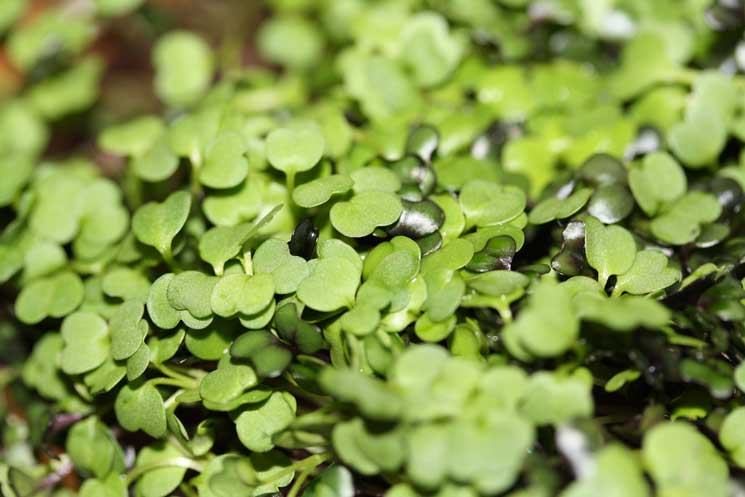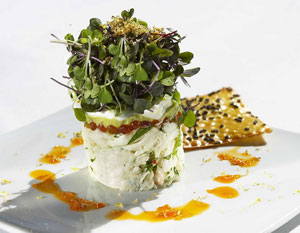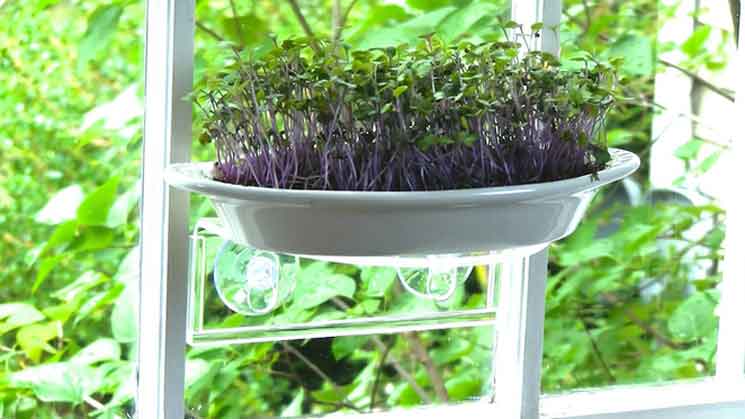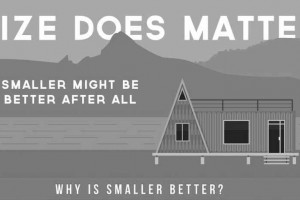I may get commissions for purchases made through links in this post.

Microgreens are tiny vegetable greens you can easily grow in your home. They are traditionally used to enhance meals both in taste as well as visually and recently have become a mainstream trend.
Microgreens are smaller than baby greens and harvested later than sprouts. On average, they are harvested 10–14 days after seeding.
Yup growing microgreens is a hip thing to do these days, but don’t let that hold you back because farming these tiny vegetables in your home has some nice advantages.
The little greens are pretty healthy
The tiny crops pack a nutritional punch. Because microgreens are harvested right after germination, they contain all the nutrients they need to grow. Certain microgreens have up to 40 times more vital nutrients than mature plants. Others pack about 5 times higher levels of vitamins and carotenoids.
Especially red cabbage, cilantro, and radish contain up to 40 times higher levels of vital nutrients than their mature counterparts.
Of course you should take into account the fact that you probably also eat a whole lot less of the microgreens compared to normal vegetables.
They allow for space efficient home farming
Even with very limited space, a sunny windowsill is enough to provide a considerate amount of home grown organic produce.
Because these high concentrations of nutrients you need about 5 and up to 40 times less space when growing your own veggies.
Which means that even in a NYC apartment’s ramped kitchenette you can grow your own fresh, organic greens.
Growing microgreens is easy
Micro greens are quick and easy to grow. You don’t need green fingers. Even a child can do it. In fact, it makes for a great project for kids.
It’s just a matter of putting the seeds in a container on a growing medium, adding some water and voila. after about 10 to 14 days you can start eating.
Quickly and easily make your meals healthier
No time for healthy cooking? Just sprinkle some freshly cut microgreens on your peanut butter and chili paste sandwich (one of my favorites, especially with some slices of cucumber). Or make a simple microgreen salad. No hassle but still a healthy meal.
“Self sufficiency”

Admitted, growing two reused fast food containers with alfalfa and spinach sprouts has pretty much nothing to do with being self sufficient.
But learning how to grow your own food is probably one of the most wise things you can do in our modern mono-culture dominated food landscape. Especially when you are involving your kids in the mini project. New technologies such as hydroponic growing kits make growing a whole lot easier.
You are actively participating in the urban farming / local food movement. You know, being reducing your carbon footprint and being sustainable and shit.
On a more serious note though..
If you’re into organic food it’s probably best to grow your own produce
More and more people think it’s essential to buy organic food. The problem however with buying organic food is that you can’t trust what you are getting.
The organic movement, as it once was called, has largely shifted to the industrialization of organic food.
Take for example Whole Foods. Many of the foods there are labeled ‘humanely raised’, ‘free range’, or ‘certified organic’. However, the times that Whole Foods got their produce from small local organic farms are long gone.
Michael Poulan describes in The Omnivore’s Dilemma how he visited ‘Rosie the organic chicken’ and how her farm “turns out to be more animal factory than farm”. The ‘free range’ lifestyle as advertised on the packaging in reality consists of a little door in the shed leading to a narrow grassy yard to which the chickens have access only the last two weeks of their lives.
The only way to be sure if your food is organic is to know where your food is coming from.
For example by picking your own berries at uncle Jack’s farm just outside town. Or to grow them yourselves. The recently released RipeNearMe app also offers a solution to this problem.
Another motivation to grow your own greens is that the nutritional value of produce has declined the past decades. In the 60’s and 70’s fruits and vegetables were much richer in vitamins and minerals than the varieties most of us get today.
Culprits are soil depletion and breeding techniques encompassing altered genetics for fast-growing, greater yield, pest-resistant crops that look shiny and omit spots or irregularities. Taste was ‘improved’ (everything needs to taste sweeter) at the expense of nutrition.
A study published in December 2004 in the Journal of the American College of Nutrition found “reliable declines” in the amount of protein, calcium, phosphorus, iron, riboflavin (vitamin B2) and vitamin C over the past half century for 43 different vegetables and fruits.
Side note:
You don’t have to buy organic, GMO-free food or shop at a Whole Foods Market in order to have a healthy, well-balanced diet.
In order to eat healthier the most important action you can take is to cut back on processed junk and industrially raised animal products, cooking from scratch, and eating more vegetables.
Real food, even if it’s genetically modified and sprayed with pesticides, is always going to be healthier than a diet of frozen microwave dinners, giant sodas, and bags of chips. Read more about GMO’s and organic hysteria on Treehugger.
Microgreens allow you to refine your meals with flavor and color

Many microgreens have an intense, specific flavor. Their unique essence and texture offers delicacies that are pleasing to the most refined palate.
In addition, with microgreens you can add vibrant colors to your dishes. Because they come in such a wide variety of colors, microgreens became popular as garnishes among chefs and foodies.
Some people may scuff at the importance of such an aesthetic tool but they may be ignoring the fact that looks are an important (if not essential) part of taste. If food looks tasty, it IS more tasty.
The color of food is an evolutionary ingrained characteristic. It shows us whether fruit is ripe or meat is rancid.
Moreover, studies show that food color can greatly affect how it tastes. In fact, color dominates taste. In one study, orange juice tasted different according to test persons when in fact there was no actual taste difference, only a slightly different color.
Microgreens are a natural and healthy version of the abundant coloring agents present in our day to day industrial food. Whether it’s soft drinks, salad dressings, cookies, condiments, chicken dishes, and sandwich buns, they are everywhere.
Tip: when choosing a microgreen, researchers say to look for the most intensely colored ones, which will be the most nutritious.
Growing microgreens is fun
Of course, some people just don’t like plants but for most human beings plants are soothing. Taking care of your own crops, eating them, seeing them grow is appealing. There’s some primal appeal to it too.
Studies show that just by looking at the color green (e.g. your little windowsill crops) you will be able to facilitate creative performance. Which will help you cook an even more sophisticated and tasty meal.
This, of course, may come off as a bit far fetched, we are just talking about a bunch of little plants in a plastic box you might say. However, in our modern industrialized society, where we have lost most contact with nature, there is something to going back to a more direct relationship with our food.
So all things considered, max out your kitchen, put up some containers with microgreens and enjoy the perks of being a microgreen grower.
Update:

If you don’t have window sills this Microgreenz growing kit that attaches to the window itself may come in handy. Check it out on Kickstarter.
Images: Danielle Scott and Cahaba Club.























Add Comment